|
===================================================
How To Break 80 Newsletter
March 28, 2007
"The Web's Most Popular Golf Improvement Newsletter"
===================================================
In this issue we'll discuss...
1) Hitting a Semi-buried Bunker Blast
2) How To Hit A Mid-Iron Fade
3) Question of the Week- The Magic Move (Downswing)
4) Article- Imitating the Pros- Three Things To Watch For
5) Article- The Magic Move (Downswing)
===================================================
1) Hitting a Semi-buried Bunker Blast
===================================================
Among the keys to extricating yourself from a greenside bunker—in addition to not letting the shot intimidate you—is adjusting to the ball's lie. Making the right lie adjustments is especially critical when you find yourself with a semi-submerged ball. That's when it pays to remember that the lower the ball sits in the sand the less spin and control you can put on it.
Here are six keys to hitting this shot:
• Square-up your body
• Widen your stance
• Square clubface to the target
• Adjust the clubface angle
• Swing along the target line
• Hinge wrists sooner than normal
Body stability is essential here. Use a square body position instead of an open one, aiming your feet and shoulders directly at the target. In addition, widen your feet, put 65 percent of your weight on your front foot, and play the ball toward the middle of your stance.
With a semi-buried ball, the lie controls the clubface. The more you open the clubface, the less sand you catch and the more bounce you get from the club, making it ideal for a ball sitting up on the sand. When the ball is semi-buried like it is here, you need to catch more sand to extricate the ball. So square the clubface to the target.
Also, use a normal grip and relax. Don't tense up like some golfers do when they find themselves in a bunker. Adjust the clubface angle before you take hold of the club, not after. You never want to twist your hands to open or close the clubface.
The key to hitting this shot is digging beneath the ball and letting the sand lift the ball toward the target. To ensure the proper dig, swing the club on the target line and let the wrists hinge sooner than normal. These adjustments steepen your swing considerably, ensuring a downward blow into the sand about an inch behind the ball. Make sure you accelerate the club through the swing and delay the release of the hands.
Even the best players in the world find themselves in a bunker sooner or later. What separates good players from not so good players is the ability to get out of a greenside bunker in one shot, limiting the damage done. Remember the keys to hitting a semi-buried bunker blast and you'll achieve that goal.
=================================================== 2)
How To Hit A Mid-Iron Fade
===================================================
You've probably seen the tour players hit this shot hundreds of times on television—the high fade that lands softly on the green and sticks, setting them up for a birdie try. These players probably wouldn't be playing on the tour if they hadn't perfected this shot years ago. If you're determined to improve your game, you need to learn this shot because it saves strokes and it gets the ball closer to the pin in some cases.
You've probably seen the tour players hit this shot hundreds of times on television—the high fade that lands softly on the green and sticks, setting them up for a birdie try. These players probably wouldn't be playing on the tour if they hadn't perfected this shot years ago. If you're determined to improve your game, you need to learn this shot because it saves strokes and it gets the ball closer to the pin in some cases.
The key to hitting the mid-iron is making the right the adjustments. They encourage an outside-to-in swing path by ensuring that the left arm leads the body through impact, which is ideal.
Here are five keys to hitting a mid-iron fade:
• Open your stance
• Increase grip pressure
• Open the clubface slightly
• Position ball in normal spot
• Hinge wrists earlier
Start by addressing the target with your front foot drawn back a couple of inches from the target line. If you're a right-hander, your body should be pointing slightly left, but not too much. Position the ball in its normal spot, somewhere between your left eye and your left ear (right-hander).
Now, increase the grip pressure of the left hand, which helps delay the release of the hands through impact. Be careful not to squeeze too hard. Squeeze just a little harder than normal. And concentrate on keeping the back of the left hand facing the target through impact.
Also, open the clubface slightly. This ensures that you'll put some cut spin on the ball at impact. But don't over do it. Instead, aim the clubface just a few yards to the right of the target.
In addition, try taking the clubface on an outside-in path. And hinge the wrists earlier than normal. This steepens your swing enough to hit the fade. With the left-handed grip pressure and the open clubface, the face will be open at impact, resulting in the desired shot.
Knowing how to hit a mid-iron fade comes in handy. It's a great shot when you're about 180 yards from the green, especially when you want to land on the hole and stick. The ball launches high and comes down softly on the green, setting you up (hopefully) for a birdie putt. It's a shot that improves your game by saving you strokes.
=================================================== 3)
Question of the Week- The Magic Move (Downswing)
===================================================
From John Kelly, Australia
The Magic Move (Downswing)
Q. Hi Jack,
Thanks for the many tips. I am a right-handed player. I recently had a golf lesson to try to cure my "duck hook drive." I also hit a lot of shots with a slight hook to the left with my middle irons. The teacher told me that I have good position at the top, but it all falls to pieces coming down as I have an "out to in" swing. My left arm does not fold under in the follow-through…it’s more of a chicken wing affect sticking out left. How do I get the right transition on the way down to keep it on plane? It's killing my scores! I shot 79 about 8 weeks ago and now shooting between 88 and 105. HELP!!!!!!
A. Thanks for the question, John. While your shoulder turn and arm swing are related, a good backswing requires a left arm swing that’s on a slightly higher plane than your shoulders. This arm angle allows your shoulders to have more of a free passage to the ball on the downswing. If your left arm swing is off, you’ll automatically be on the wrong plane and your swing will be off. Employing a simple move at the top of your backswing ensures that you’re taking the right swing plane as you start into the downswing. As you begin your downswing shift your weight onto your left foot while, at the same time, bringing your right elbow back down to your body. Remember to retain the angle of your wrist as you complete this move. It’s the seat of power and the key to maximum distance.
As the weight shifts to the left and the elbow drops down, the club falls automatically into the right slot for the correct swing plane. This movement flattens the swing ever so slightly. But it’s the ideal position from which to swing the club down at the ball, delivering the clubhead squarely to impact point. In essence, you’re employing two swing planes to hit the ball correctly, one slightly different than the other. The first comes from executing the correct take away. The second from dropping down your right elbow just before the downswing.
That slightly different swing plane is crucial. It runs right through the correct angle of your spine, the natural axis around which your shoulders should turn, enabling you to deliver a clean crisp blow to the ball, with a square clubhead and good power. This may seem complex but in reality it is quite simple.
If you've got a golf question you'd like
answered, send an email to us at
questions@howtobreak80.com and we'll
review it. I can't guarantee that we'll
use it but if we do, we'll make sure to
include your name and where you're from.
===================================================
If you want to truly discover the secrets of shooting like the Pros and creating a more reliable and consistent swing, check out:
http://www.HowToBreak80.com
P.S. Feel free to share this newsletter with family and friends. If you
would like to subscribe to this newsletter, send a blank email to
break80ezine@aweber.com
===================================================
About the Author
===================================================
Jack Moorehouse is the author of the best-selling book
"How To Break 80 and Shoot Like the Pros!". He is NOT a golf pro, rather a working man that has helped thousands of golfers from all seven continents lower their handicaps quickly. His free weekly newsletter goes out to thousands of golfers worldwide and provides the latest golf tips, strategies, techniques and instruction on how to improve your golf game.
|
Tools To
Help Your Game!
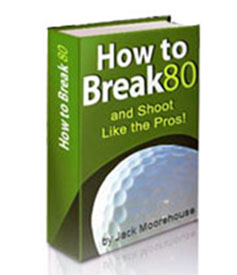
eBook
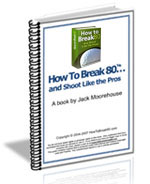
Physical Book
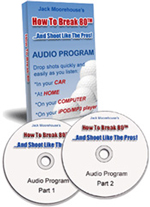
Audio Program
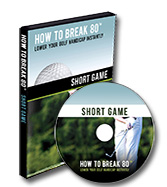
Short Game DVD
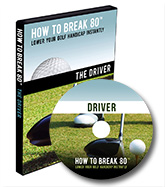
Driver DVD
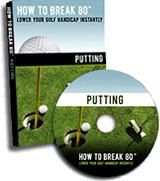
|